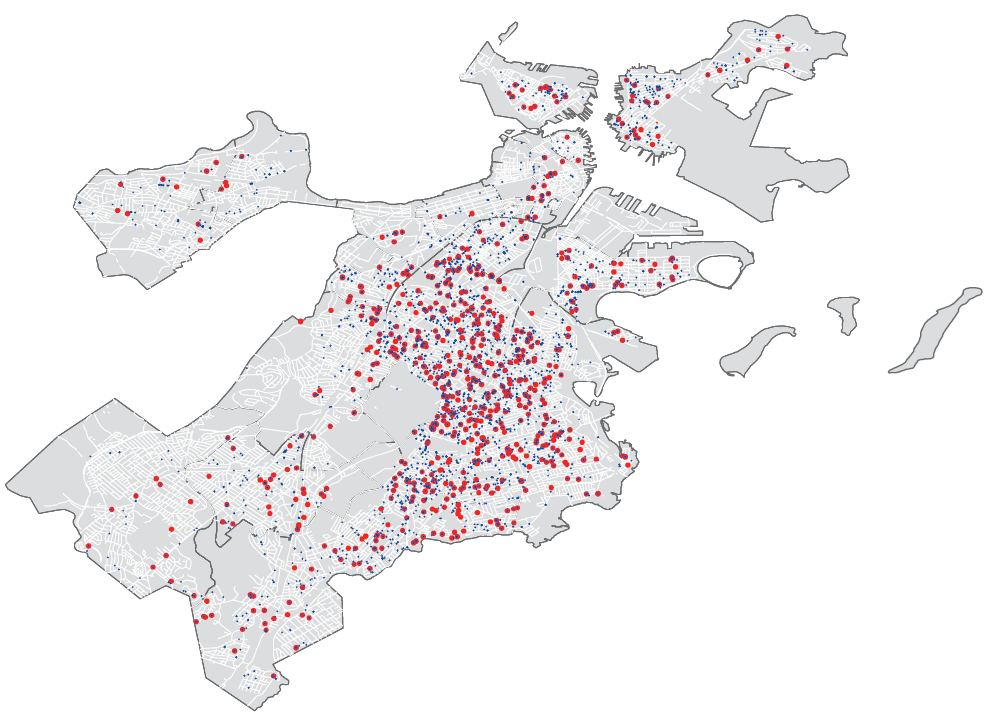
A SWATH OF mostly minority Boston neighborhoods is so heavily affected by the criminal justice system that nearly every street has a resident who has spent time in jail, a concentration of incarceration that is costing millions of dollars and threatening the social fabric of neighborhoods already struggling with high rates of poverty and other challenges.
That’s the conclusion of a study released Thursday that maps the impact on Boston neighborhood of incarceration in the Suffolk County House of Correction and Nashua Street Jail. The report, produced by The Boston Foundation, the Massachusetts Criminal Justice Reform Coalition, and the Boston think tank MassINC, says some high-poverty Boston neighborhoods have reached a “tipping point” where more imprisonment is not enhancing public safety but instead is straining the social ties that “differentiate safe neighborhoods from those afflicted by crime.”
The authors say criminal justice reform efforts now underway in the state should move aggressively to reduce incarceration rates by repealing mandatory minimum sentences, using more diversion programs to rehabilitate offenders in community settings, and bolstering education services and other programs inside jail that might help reduce recidivism rates.
Between 2009 and 2015 in the Franklin Field neighborhood of Dorchester, more than 1 in 5 men aged 25 to 29 served time in the Suffolk County House of Correction, the report found. In the Grove Hall neighborhood, about 1 of every 6 men in that age group was committed to the House of Correction during that period.
“At some point, sending more folks off to prison actually is not the answer,” said the report’s coauthor Ben Forman, research director at MassINC, which publishes CommonWealth.
The report points to several factors that research studies show contribute to that “tipping point” effect, including the normalizing of incarceration in neighborhoods to the point where it carries no stigma, the easy replacement of gang-involved offenders with new recruits, and destabilization of families and relationships when residents, many of whom are fathers, cycle in and out of correctional facilities.
